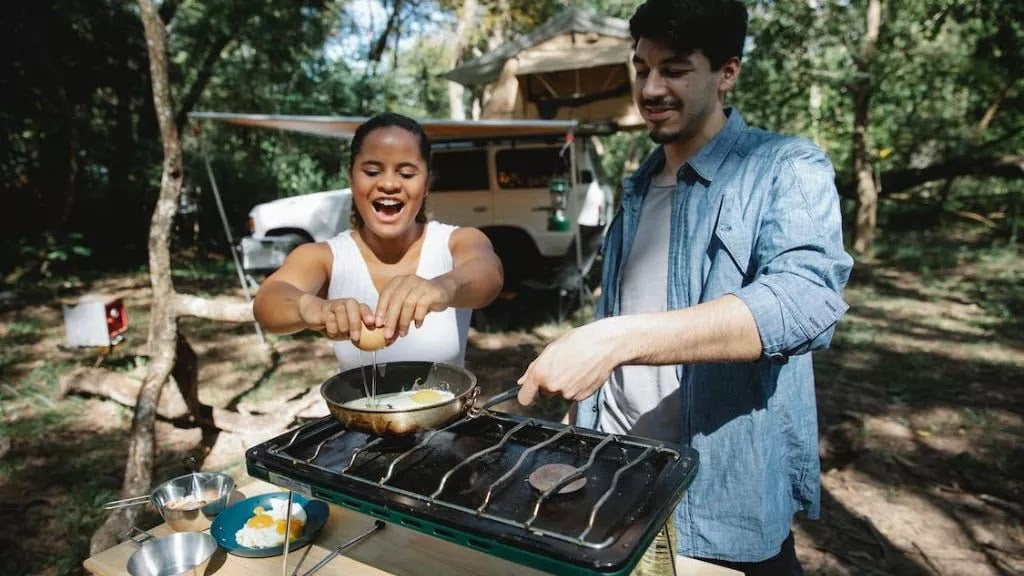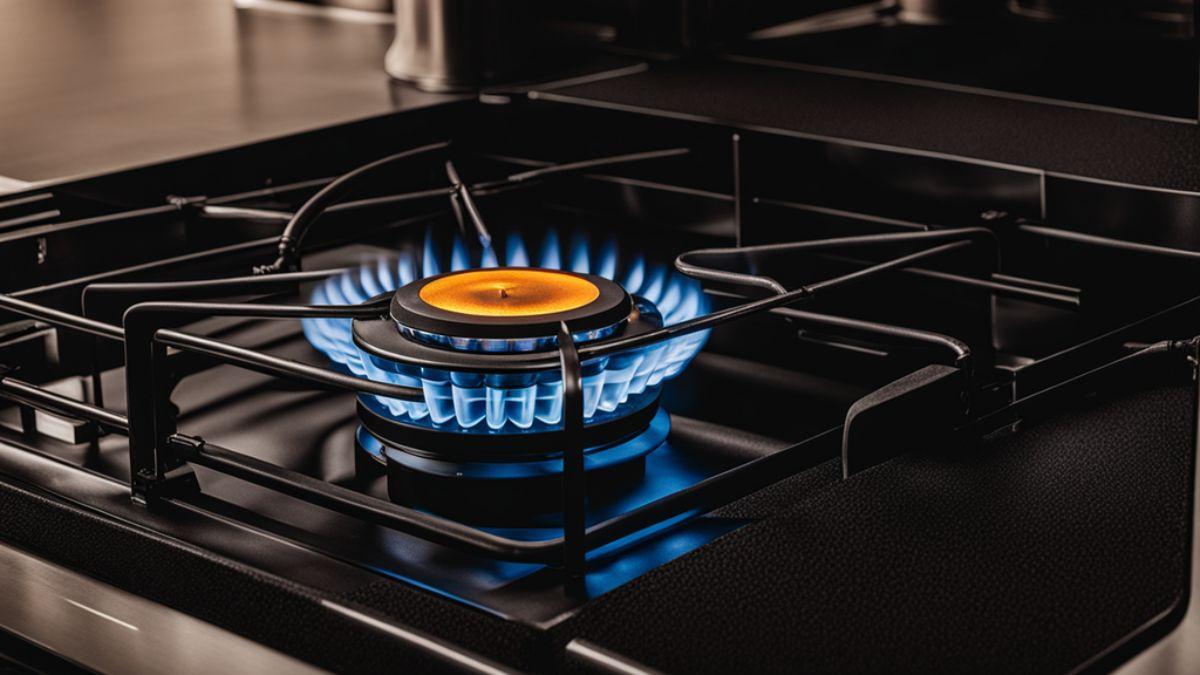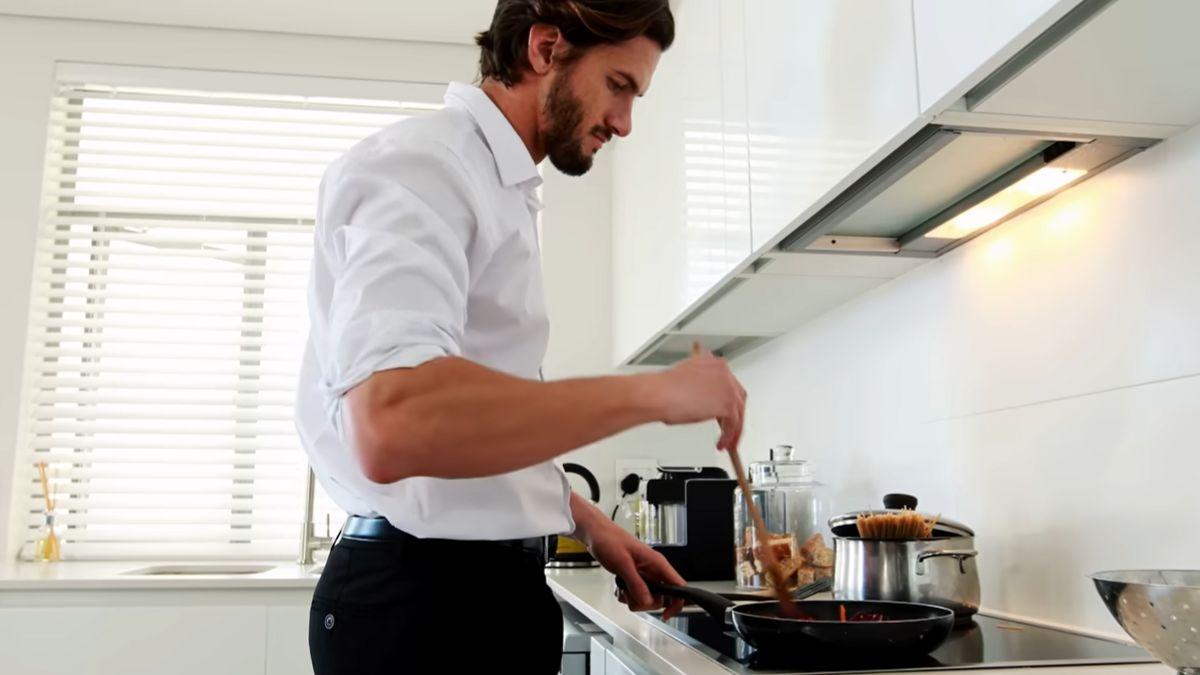
We may earn money or products from the companies mentioned in this post.
An electric stove can reach temperatures of up to 1,500°F (815°C) on the highest setting. Its average cooking range is between 100°F to 800°F (38°C to 427°C).
Exploring the capabilities of an electric stove is essential for both beginner and experienced cooks. The wide temperature range allows for diverse cooking methods, from a gentle simmer to searing heat. Electric stoves provide consistency and control, essential for precise cooking outcomes.
With different stovetop elements and innovative designs, electric stoves cater to a variety of culinary requirements. They offer multiple settings to adjust the heat according to the recipe’s demand, ensuring optimal cooking conditions. Safety features are also prominent, preventing overheating and reducing the risk of kitchen mishaps. As an essential kitchen appliance, the electric stove is a reliable companion for creating an array of dishes, tuning into the special needs of diverse ingredients for perfect meal preparation every time.
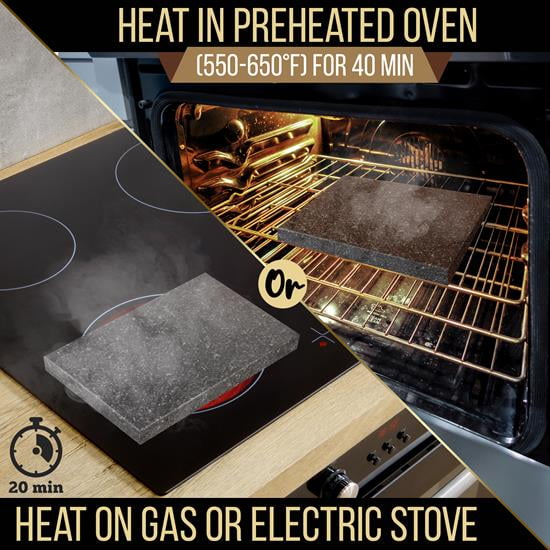
Credit: www.walmart.com
Introduction
Understanding the heating potential of an electric stove is crucial for efficient cooking. Typically, electric stoves reach temperatures between 900°F to 1500°F, varying based on settings and models.
Understanding Electric Stove Temperatures
Curiosity simmering about how fiery your electric stove can get? Most of us use this kitchen mainstay without pondering the maximum heat it can summon. Cooking demands precise temperature control, and electric stoves are designed to stand and deliver. From a gentle warmth to rapidly boiling water, the heat output of these appliances is both versatile and potent.
The Range Of Heat Settings
Before delving into the peak temperatures, let’s warm up with a run-through of heat settings:
- Low: Ideal for simmering and gentle warming.
- Medium: Suited for sautéing and cooking foods thoroughly.
- High: Brings liquids to a boil rapidly and can sear meats.
These settings are not merely arbitrary notches on your stove’s dial. Each corresponds to a specific heat range, allowing you to fine-tune your cooking process.
Hitting The Highs: Maximum Temperatures
Capturing the fiery essence at the top end of the scale, electric stoves are quite the scorchers. While the exact numbers can hinge on the make and model, here’s a snapshot of the sizzling highs that can be reached:
- Boiling Point: Capable of driving the temperature of water to a bubbling 212°F (100°C).
- Searing Heat: Designed to crank out heat up to 932°F (500°C) for those serious about a perfect sear.
Reed: How Hot Can an Electric Stove Burner Coil Get: Sizzling Facts!
Temperature Range Of Electric Stoves
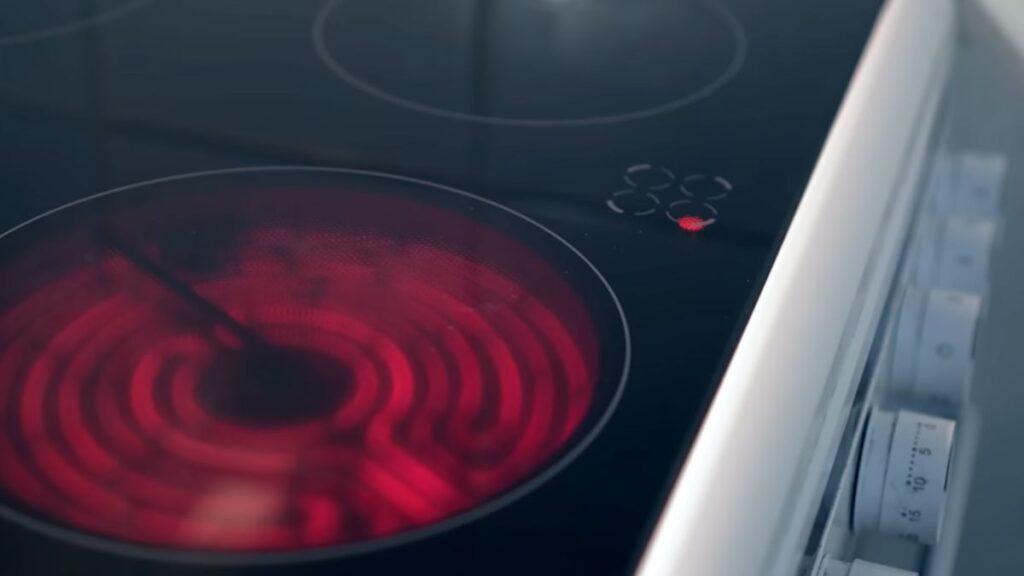
Electric stoves typically reach maximum temperatures between 300°F and 500°F (149°C to 260°C). Models with enhanced features offer extended ranges, peaking up to 800°F, catering to diverse cooking needs.
Understanding The Heat Output Of Electric Stoves
Determining the heat output of your electric stove can be crucial for cooking your favorite dishes to perfection. Unlike gas counterparts, an electric stove relies on electrical elements to generate heat, and these can reach impressive temperatures. It’s essential to comprehend the varying degrees of warmth that electric stoves can achieve to cater to your culinary needs.
Electric stoves offer a noticeable range of temperatures, accommodating all forms of cooking, from a gentle simmer to a sizzling sear. The specific heat output can vary depending on the stove model and settings available. Here’s a breakdown of the temperatures electric stoves can attain:
- Low setting: Around 200°F (93°C), perfect for simmering sauces or melting chocolate without fear of scorching.
- Medium setting: Typically approximates 300°F to 400°F (149°C to 204°C), ideal for sautéing vegetables or cooking pancakes.
- High setting: Can climb upwards of 500°F to 650°F (260°C to 343°C), which is necessary for searing meats or stir-frying.
Remember that these temperature ranges are not absolute and can differ from one appliance to another. It’s always a good idea to consult your stove’s manual for precise temperature settings.
Factors That Influence Electric Stove Temperatures
Not all electric stoves heat up the same way or maintain consistent temperatures throughout cooking. Several factors affect how hot your electric stove can get including:
- Element type: Coil elements and smooth-top surfaces may distribute heat differently.
- Wattage: Generally, higher wattage elements tend to heat up faster and offer higher temperatures.
- Cookware used: Certain materials, such as cast iron, retain heat better and can change the cooking experience substantially.
By being mindful of these aspects, you can better predict how your electric stove will behave and adjust your cooking methods for perfect results every time.
Reed: Discover Electric Stove Safety: How Hot Does Electric Stove Get?
Comparison With Other Stovetops
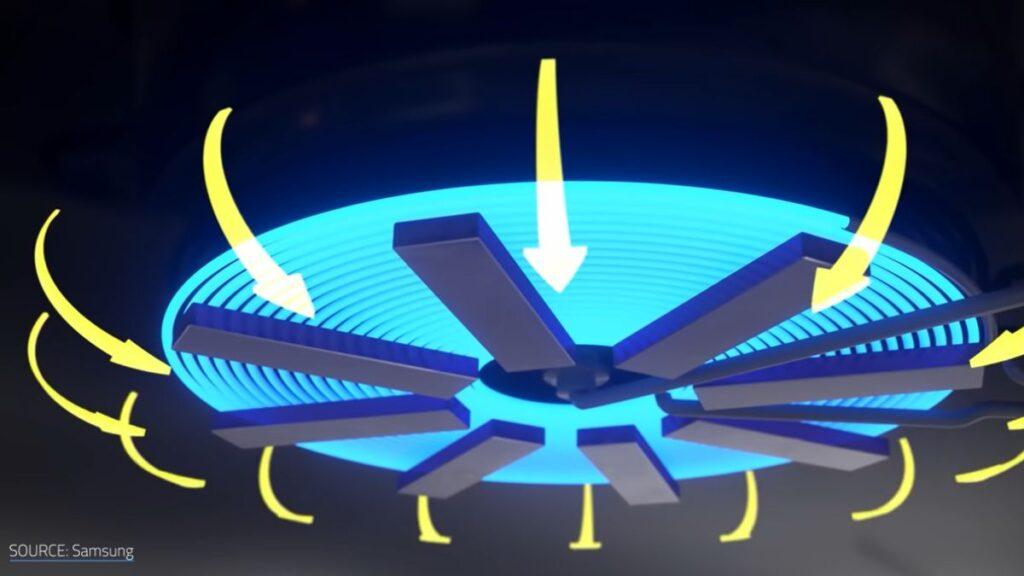
Electric stoves heat up to a range of 212°F to 932°F, hitting high temperatures suitable for various cooking techniques. Compared to gas and induction counterparts, electric stovetops offer consistent heat distribution, essential for precise simmering and boiling.
Electric Stove Temperature Capacity
When assessing the heat output of electric stoves, it’s crucial to understand their operational range. Electric stoves typically offer an extensive range of temperatures, commonly varying from as low as 100°F on a warm setting to upwards of 800°F on the highest setting, particularly when using the broil function.
The various heat settings on an electric stove are calibrated to deliver precise and consistent temperatures, a feature that is particularly beneficial for tasks that require careful heat management like simmering or melting chocolate.
Comparison With Gas Stoves
Electric stoves differ from gas stoves in several ways, not least in how they deliver heat to the cookware:
- Heat Distribution: Electric stoves usually provide more even heat distribution across the cookware surface, as the entire heating element heats up uniformly.
- Temperature Control: Gas stoves offer instant changes in heat levels, which is why they are often favored by professional chefs. Reducing or increasing the flame allows for immediate temperature adjustments, as opposed to waiting for the electric coil to heat up or cool down.
- Maximum Heat: A gas stove typically does not reach the same high temperatures as an electric stove’s broil setting but can still swiftly produce a high enough heat for most cooking needs including searing.
Comparison With Induction Stovetops
Induction stovetops represent a different approach to electric cooking and come with their own set of advantages and limitations:
- Efficiency: Induction stovetops are known for their energy efficiency. They use electromagnetic fields to directly heat the cookware while the cooktop stays relatively cool, which translates into less wasted heat.
- Speed: When it comes to boiling water or heating up a pan, induction stovetops can be much quicker than both traditional electric and gas stoves, thanks to the direct transfer of heat energy.
- Temperature Precision: Induction cooking provides fast and precise control over the temperature, similar to gas, but with the added benefit of the cooking surface staying cooler, making it a safer option in many instances.
Comparison With Ceramic Stovetops
Ceramic stovetops provide a sleek, modern look and share some characteristics with traditional electric stoves:
- Cleanliness: The smooth surface of a ceramic stovetop is easy to clean and maintain, as there are no coils or burners to contend with.
- Heating Method: While ceramic stovetops use electric heating elements similar to those found in traditional electric stoves, these elements are placed under a durable glass surface.
- Heat Retention: One thing to consider with ceramic stovetops is that they tend to hold onto heat for a longer duration after being turned off. This residual heat can be resourceful for some cooking methods but requires caution to avoid overcooking or potential burns.
With these comparisons in mind, it becomes evident that electric stoves, while capable of achieving high temperatures suitable for an array of cooking techniques, offer different benefits and drawbacks compared to gas, induction, and ceramic stovetops, making the choice largely dependent on individual cooking styles and preferences.
Reed: The Best Pots and Pans for Electric Stove: Save Time and Money
Safety Precautions
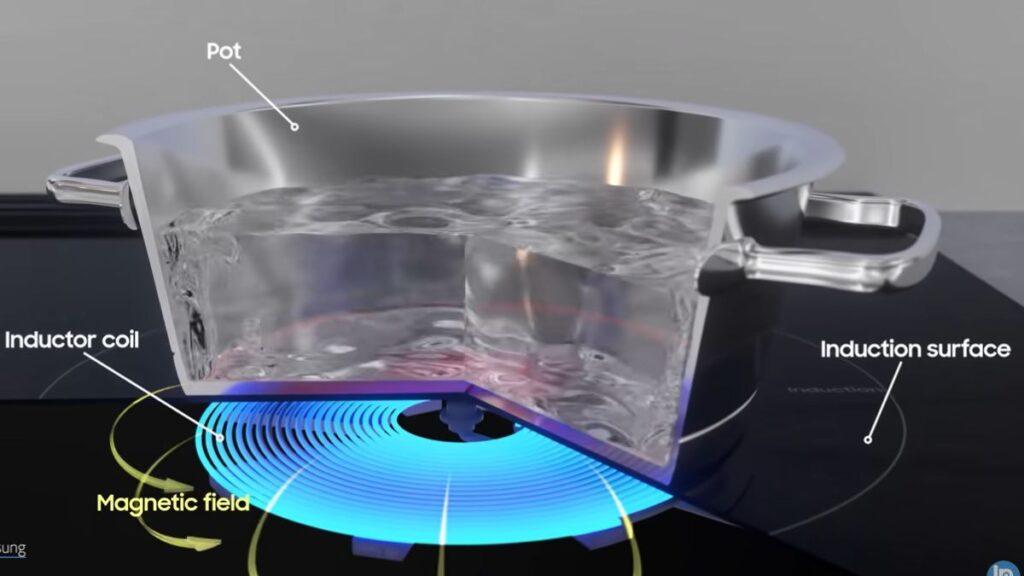
Understanding the heat output of electric stoves is critical for kitchen safety. Electric stoves can reach temperatures upwards of 500°F, necessitating caution, and proper handling to prevent accidents and injuries.
Understanding your electric stove’s temperature range is crucial, but ensuring your safety while cooking is paramount. An inadvertent touch or a misstep can lead to serious injuries. So, before we turn up the heat, let’s dive into the critical safety guidelines you should follow.
Know Your Stove’s Limitations
Electric stoves can reach temperatures that vary depending on the model and settings. It’s essential to be aware of how hot your stove can get to prevent any accidents. Usually, the temperature can range from a low of 100 degrees Fahrenheit to upwards of 1500 degrees with the broil function.
Recognizing these limits helps ensure you don’t push your appliance beyond its safe operational capacity.
Regular Maintenance Checks:
- Inspect cords and connections: Check for signs of wear or damage regularly to prevent electrical hazards.
- Ensure the stove is level: A stable stove means less risk of pots sliding off.
- Cleanliness is key: Regular cleaning prevents buildup that could catch fire or cause uneven heating.
Safety Around The Stove
Safety should never take a back seat, especially when the stakes are high-temperature cooking. Make sure that flammable materials like kitchen towels and pot holders are kept at a safe distance. Always use stove knobs with care, and confirm that they are in the ‘off’ position when not in use.
Supervision is a must if you have curious little ones or pets at home.
Protective Gear And Tools:
- Use oven mitts and handles: Protect your hands from burns when handling hot cookware.
- Proper utensils are crucial: Utilize long-handled tools to avoid close contact with the heat.
- Invest in quality cookware: Heavy-duty pots and pans provide better heat distribution and reduce the risk of accidents.
Remember, the key to enjoying the perks of your electric stove without any burns or blisters lies in these simple yet effective safety measures. Stay vigilant, and let your culinary prowess shine through safely!
Reed: La Sera Saucepans: Masterful Cooking | Non-Stick Perfection
Maintenance And Efficiency
Exploring the peak temperatures of electric stoves is crucial for both maintenance and efficiency. Understanding these limits ensures optimal performance and prolongs appliance lifespan, contributing to a safer kitchen environment.
Maintenance Tips For Your Electric Stove
Understanding the best ways to maintain your electric stove can ensure it operates at peak efficiency while extending its lifespan. Here are several key tips to keep your appliance in top condition:
- Regular Cleaning: Frequently wiping down the stove will prevent the buildup of grime and residues that can affect performance.
- Inspect the Coils: Look for any signs of damage or wear on the heating elements, as these can influence how well and how evenly your stove heats.
- Update Your Cookware: Using flat-bottomed and the correct size pots or pans for the burners can significantly improve heat transfer and efficiency.
Optimizing Electric Stove Efficiency
To ensure your electric stove is running as efficiently as possible, consider the following points:
Providing your stove with proper care can significantly affect its heating efficiency. By taking simple steps, you can maximize the stove’s performance while also saving on energy costs:
- Utilize Residual Heat: Turn off burners just before cooking is complete to use the remaining warmth, reducing overall energy use.
- Match Burner to Pan Size: By aligning the size of your pan with the burner, you ensure that heat is not wasted and cooking is more uniform.
- Regular Element Checks: Keeping an eye on the condition of your stove’s elements can prevent inefficiency due to faulty parts that may not heat properly.
By embracing these maintenance and efficiency strategies, you’ll contribute to a more sustainable kitchen environment and may even notice a decrease in your electric bills.

Credit: www.amazon.com
Frequently Asked Questions On How Hot Does An Electric Stove Get
What Is 400 Degrees On A Stove Top?
Do Gas Stoves Get Hotter Than Electric?
What Number Is 350 On An Electric Stove?
What Temp Is 7 On Electric Stove?
Conclusion
Understanding your electric stove’s temperature capabilities is crucial for culinary success. Ranging from 212 to 932 degrees Fahrenheit, precision in heating allows for diverse cooking techniques. Always prioritize safety and appliance care for optimal performance. Happy cooking on your versatile electric stove!



